AGA anestor
A gift from AGA Göteborg
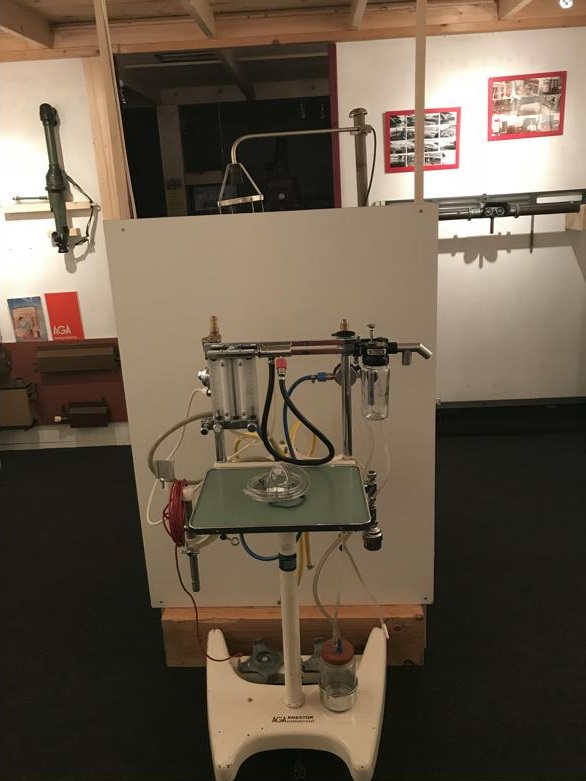
Museum Emmen

AGA Göteborg
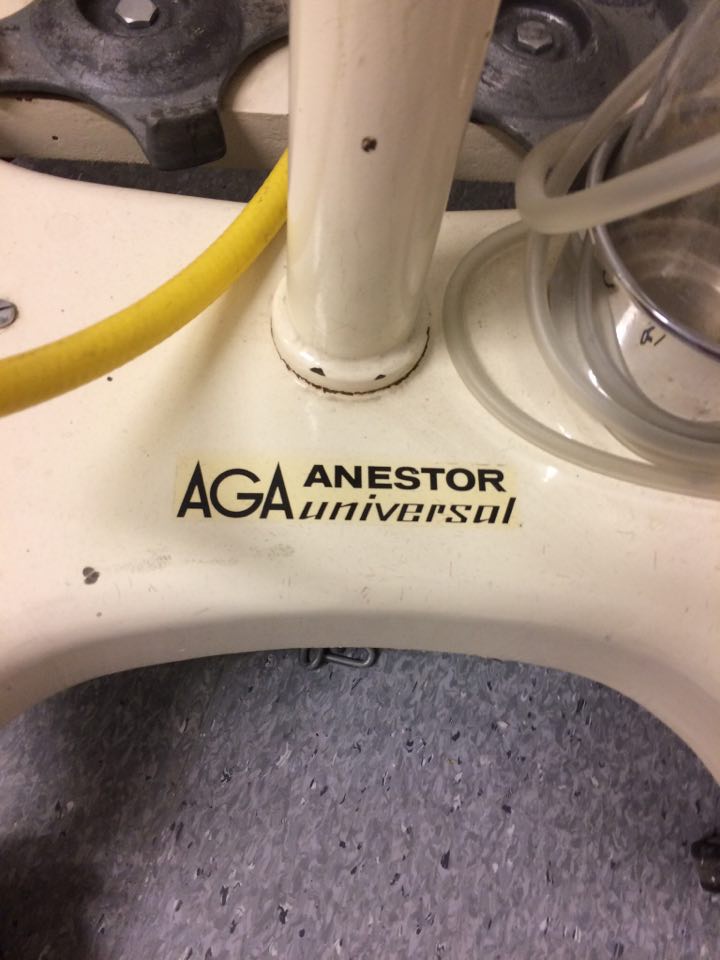
AGA anestor universal


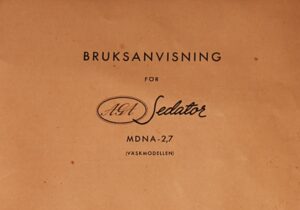

Kuvös med syrgasventilerad och uppvärmbar säng från 1950-talet.
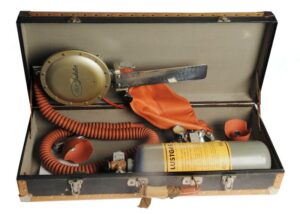
LUSTGAS AGA GÖTEBORG 1904.

lustgasapparat.


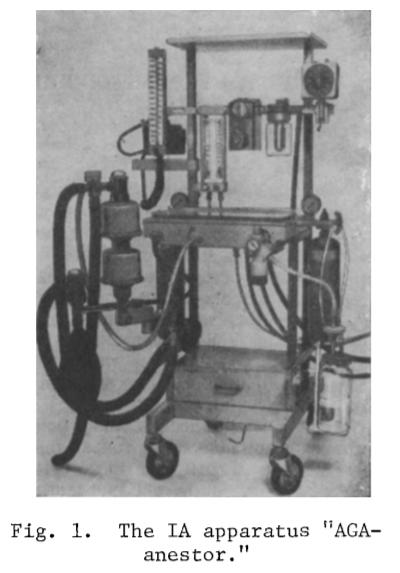
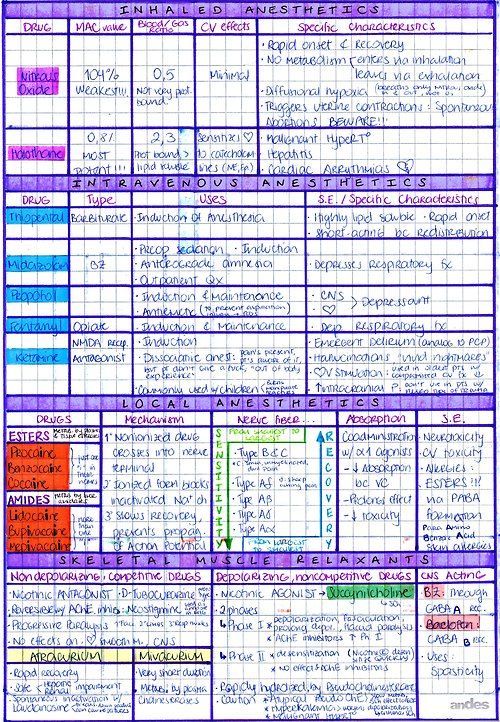

Visning av narkosapparater på AGA. 1951
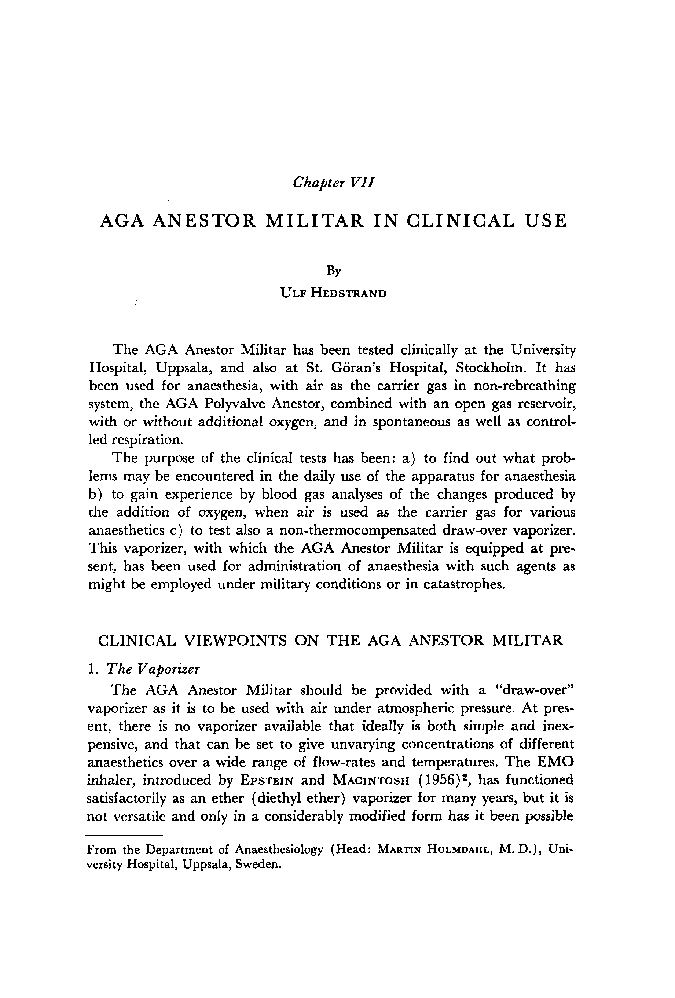
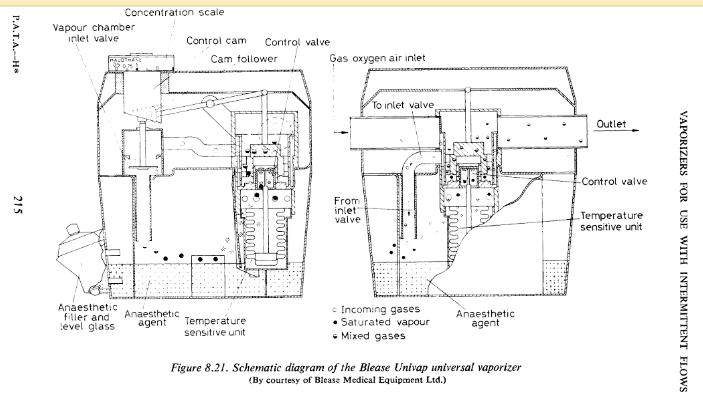
INHOUD VAN DE VERPAKKING EN OVERIGE INFORMATIE
Welke stoffen zitten er in lachgas? – De werkzame stoffen in lachgas zijn: distikstofoxide 50% = medicinaal lachgas (chemische term: N2O)
en zuurstof 50%= medicinale zuurstof (chemische term: O2) –
Lachgas bevat geen andere stoffen Lachgas is een kleurloos, reukloos gas zonder smaak,
geleverd in gascilinders met een afsluiter om de gasflow te regelen.
Farmaceutische vorm: Medicinaal gas, samengeperst De schouder van de gascilinder is gemarkeerd in wit en blauw (zuurstof/distikstofoxide). De body van de gascilinder is wit (medicinaal gas) .
Afleveringswijze: Geneesmiddel op medisch voorschrift.
(UR) Houder van de vergunning voor het in de handel brengen:
AGA AB SE
181 81
Lidingö Zweden
Fabrikanten Verpakkingsgrootten in liters 2, 5, 10.
Bijsluiter ;
AGA Gas AB
Rotevägen 2
SE- 192 78 Sollentuna Zweden
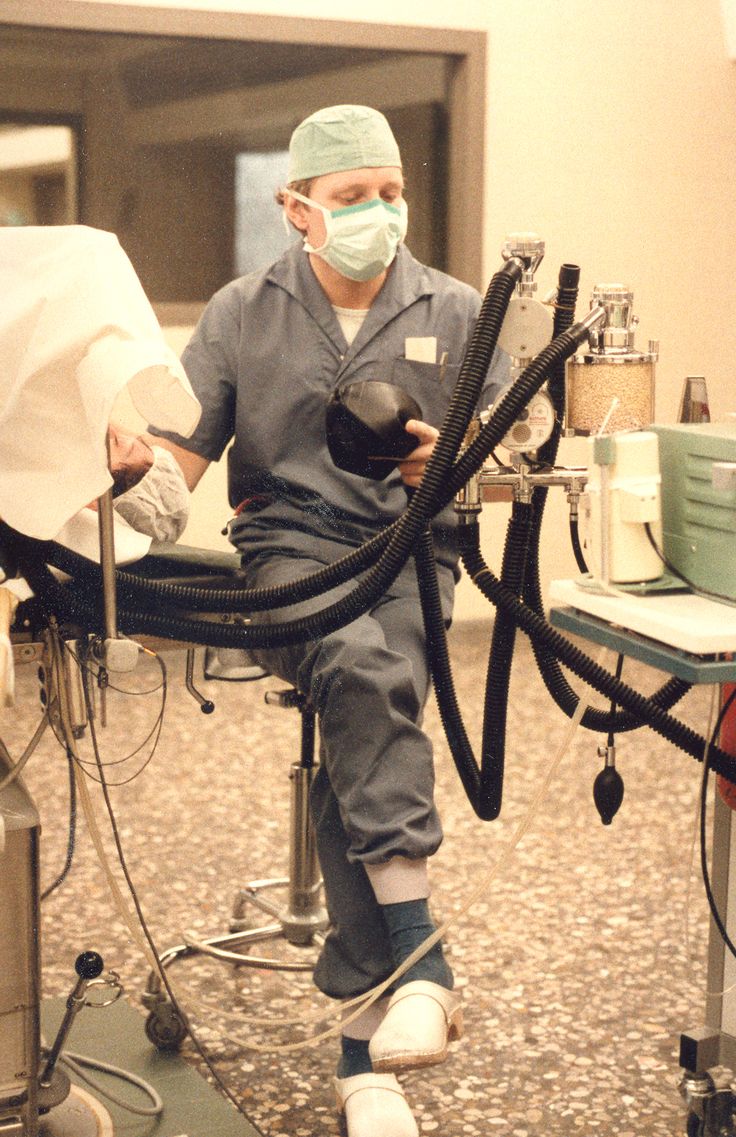
Hospital Eindhoven 1984
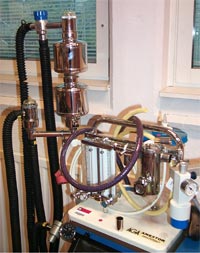
Anaesthesia apparatus militair ziekenhuis 1964

the anesthetic apparatus AGA 1981

ANESTOR MILITAR
In principe moet een anesthesieapparaat dat is ontworpen voor gebruik onder primitieve omstandigheden dezelfde technische kenmerken hebben als een apparaat dat in moderne ziekenhuizen onder normale omstandigheden wordt gebruikt. Bij het ontwerpen van een apparaat voor gebruik in het veld moeten echter verschillende factoren in overweging worden genomen, zoals de eis van transporteerbaarheid en de moeilijkheid om gecomprimeerde gassen te verkrijgen.
Een anesthetisch apparaat voor gebruik onder primitieve omstandigheden moet daarom zo zijn ontworpen dat het ook kan worden gebruikt op plaatsen waar gecomprimeerde gassen, zoals zuurstof en stikstofoxide, niet beschikbaar zijn. Onder deze omstandigheden is het enige middel om atmosferische lucht als draaggas te gebruiken.
Een andere essentiële vereiste voor een modern anesthesieapparaat is dat deze ondersteunde of gecontroleerde ademhaling moet toestaan in gevallen van falende of verzwakte spontane ademhaling. Bovendien zijn de moderne anesthesietechnieken grotendeels gebaseerd op neuromusculair blok en gecontroleerde ademhaling, en er is reden om aan te nemen dat een vergelijkbare techniek nog steeds zal worden toegepast, zelfs onder primitieve omstandigheden. Een anesthesieapparaat voor gebruik op het veld moet toediening van vluchtige anesthestica mogelijk maken, zoals halothaan, chloroform en ether.
Dit vereist een efficiënte anesthetische ver- zager die is ontworpen om te functioneren zonder samengeperste gassen, d.w.z. dat de weerstand tegen de gasstroom in de verdamper laag genoeg moet zijn om spontane ademhaling door de verdamper mogelijk te maken. Het anesthesieapparaat, dat hier wordt beschreven, voldoet aan de gestelde eisen en wordt daarom geschikt geacht voor gebruik onder primitieve omstandigheden, evenals voor dagelijks ziekenhuisgebruik onder normale omstandigheden
ANESTOR MILITAR
In principle, an anesthetic apparatus designed for use under primitive conditions should have the same technical features as one used in modern hospitals under normal conditions. In designing an apparatus for field use, however, several factors have to be considered, such as the requirement for transportability and the difficulty in obtaining compressed gases.
An anes- thetic apparatus for use under primitive conditions should therefore be so designed that it can be employed also in places where compressed gases, such as oxygen and nitrous oxide, are not available. Under these circum- stances the only recourse will be to use atmospheric air as a carrier gas.
Another essential requirement for a modern anesthetic apparatus is that it should permit assisted or controlled respiration in cases of failing or impaired spontaneous respiration. Furthermore, modern anesthesia tech- niques are to a great extent based on neuromuscular block and controlled respiration, and there is reason to presume that a similar technique will still be employed even under primitive conditions. An anesthesia apparatus for field use should permit administration of volatile anesthestics, such as halothane, chloroform and ether.
This requires an efficient anesthetic va- porizer designed to function without compressed gases, i.e. the resistance to the gas flow in the vaporizer should be low enough to permit spontaneous breathing through the vaporizer. The anesthesia apparatus, which will be described here satisfies the requirements indicated, and is therefore con- sidered suitable for use under primitive conditions, as well as for daily hos- pital use under normal conditions.


Prompt action has allowed the anesthesia machines to be rebuilt to the draw-over principle (Figure 1). Technically, the rebuilt machines resemble the British Triservice apparatus, 3 ” but are of Swedish manufacture and based upon the AGA Anestor Militar.9 Sweden also has adopted the Oxford Miniature Vaporizer OMV-50 (Figure 2) from the Triservice apparatus after Dalenius tested it in Sweden. 33 This very simply constructed, yet safe vaporizer can be filled with almost any volatile anesthetic. The authors have evaluated it using ether, halothane, enflurane, isoflurane, trichloroethylene and the halothane-ether azeotrope. Other authors have tested it using chloroform and metoxyflurane. As for ventilators, many have been purchased including the venerable Engstrom 300 (Figure 3), as well as smaller, bag-in-bottle models. When compared with civilian standards, however, the number still is insufficient.
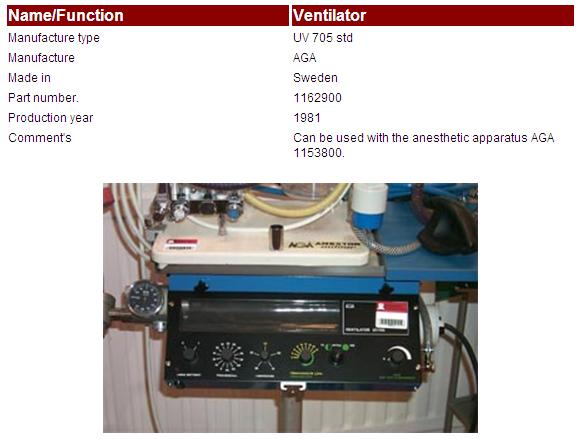



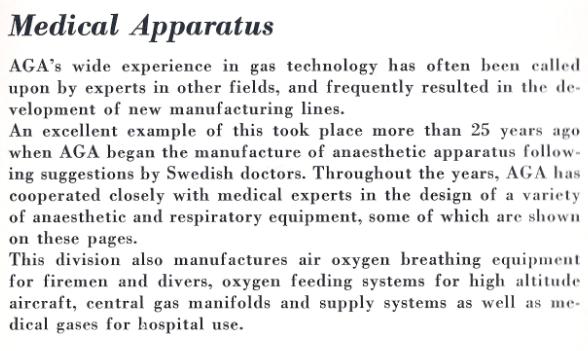



Erik Krag Jenssen had afgelopen weekend dienst in het Longyearbyen Ziekenhuis, wetende dat een ambulance niet kon assisteren. – Zorgelijk, zegt hij.
 AGA UV-705
AGA UV-705

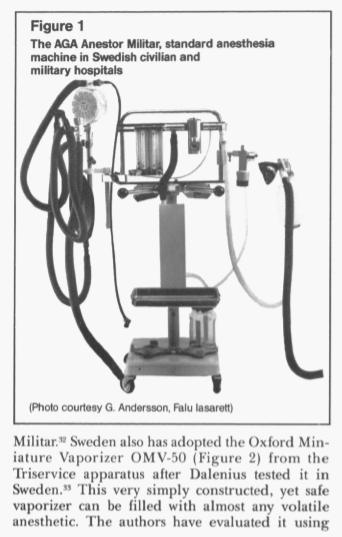

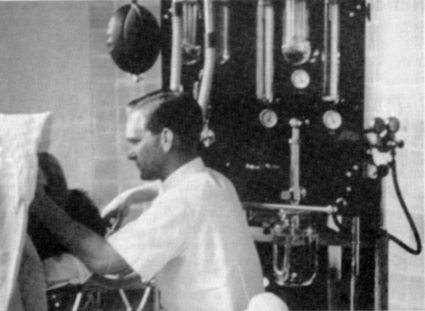
Torsten Gordh arbetar vid den första svensktillverkade narkosapparaten AGA, kallad lokomotivet. Foto Ur Karolinska sjukhuset 1940–1990, en minnesbok
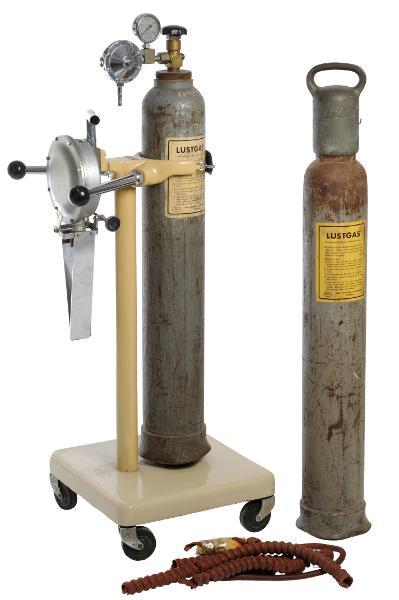
AGA lustgasapparat 1986 + AGA gas
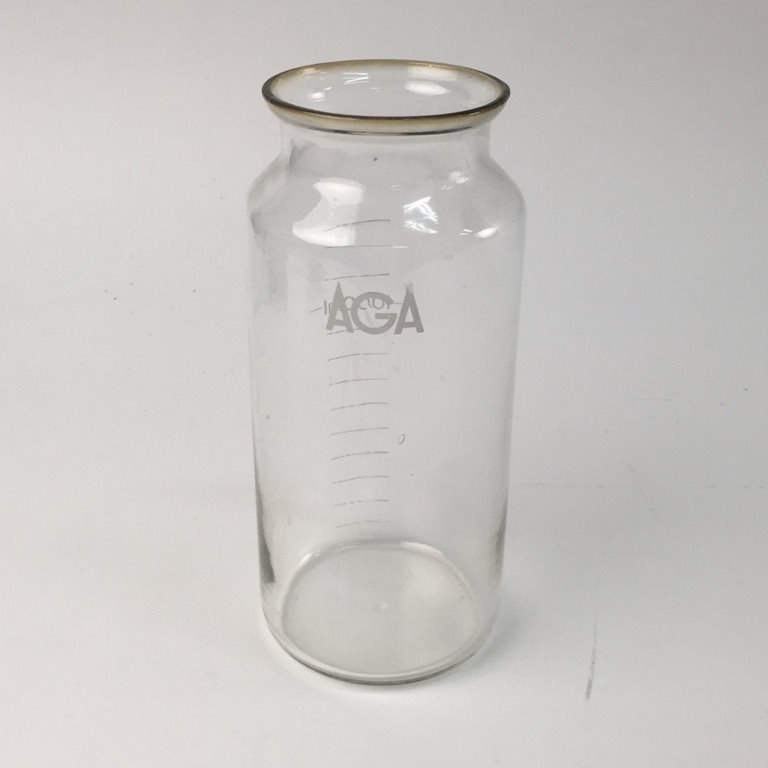
AGA museum Emmen

Hjärtlungmaskin

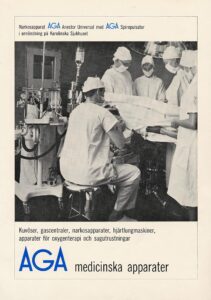
VANAF HIER ANDERE FOTO`S




AGA SEDATOR, staat voor lachgasbuis

AGA SEDATOR, staat voor lachgasbuis

AGA SEDATOR, staat voor lachgasbuis

AGA SEDATOR, staat voor lachgasbuis

AGA SEDATOR, staat voor lachgasbuis

AGA SEDATOR, staat voor lachgasbuis

AGA SEDATOR, staat voor lachgasbuis

NARKOSAPPARAT MODELL NR 30, AGA, LOKOMOTIVET

NARKOSAPPARAT MODELL NR 30, AGA, LOKOMOTIVET

NARKOSAPPARAT MODELL NR 30, AGA, LOKOMOTIVET

NARKOSAPPARAT MODELL NR 30, AGA, LOKOMOTIVET

NARKOSAPPARAT MODELL NR 30, AGA, LOKOMOTIVET

NARKOSAPPARAT MODELL NR 30, AGA, LOKOMOTIVET


vanaf 11-05-2013